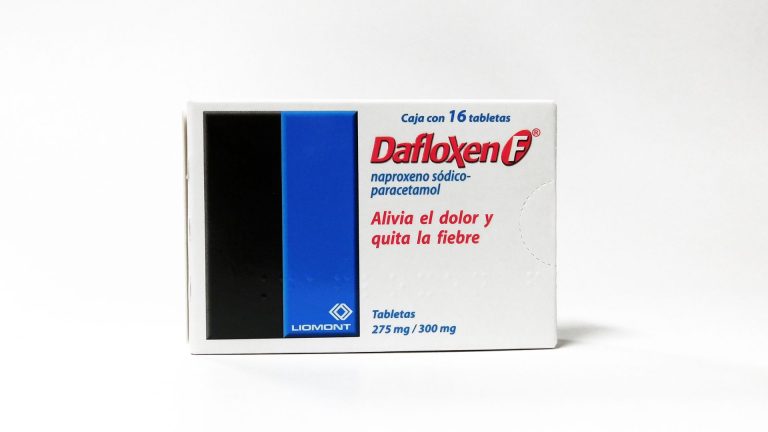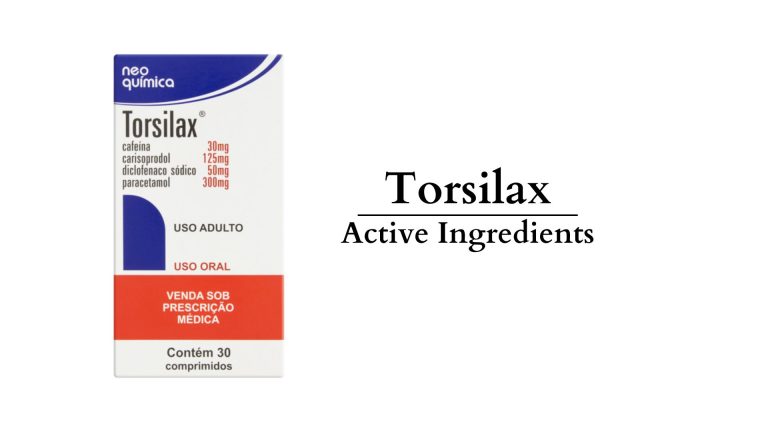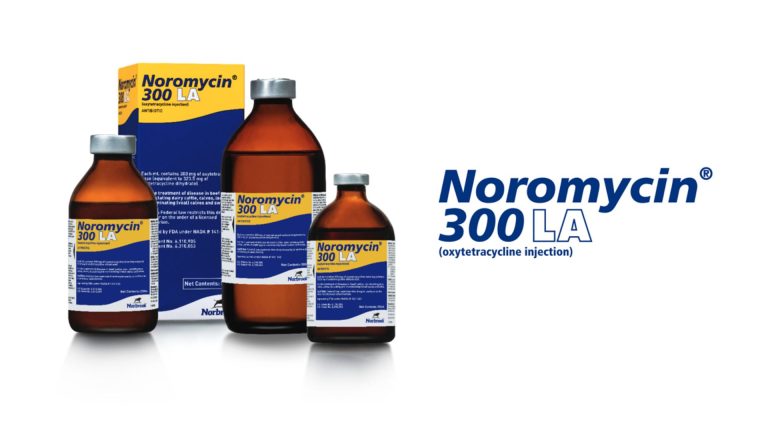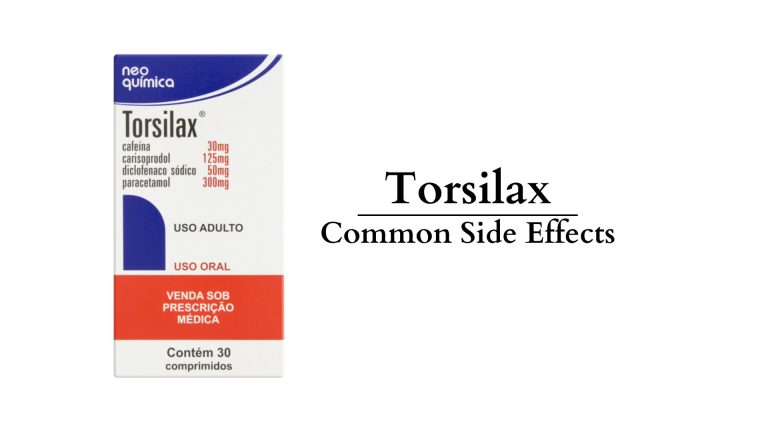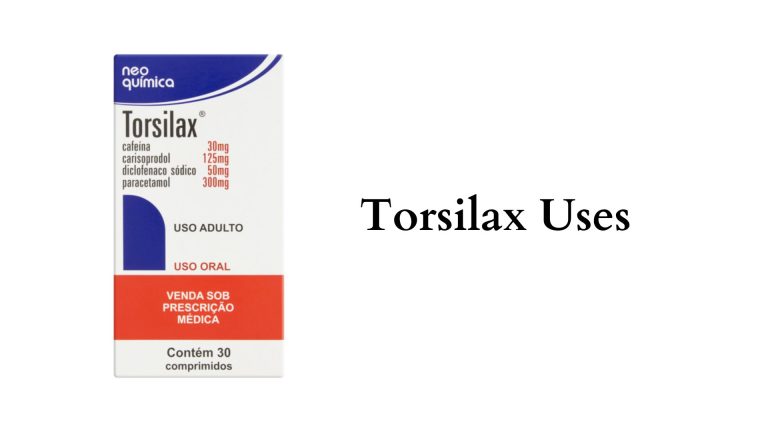Torsilax Dosage – Carisoprodol Use Guide
In an era where musculoskeletal conditions plague a significant portion of the global population, understanding the treatment options available is crucial. Torsilax, powered by the active ingredient carisoprodol, emerges as a potent solution for those grappling with muscle spasms and discomfort. This comprehensive guide navigates the intricacies of Torsilax dosage, delving into specifics such as the mechanism of action of carisoprodol, dosage guidelines, managing side effects, and necessary precautions to ensure the safe use of this muscle relaxant.
Carisoprodol Work as its Active Ingredient?
Carisoprodol acts as the backbone of Torsilax’s effectiveness, categorised under the class of drugs known as carbamate. This active ingredient is renowned for its capacity to alleviate pain and discomfort associated with acute, painful musculoskeletal conditions. By influencing the central nervous system, carisoprodol works to interrupt neuronal communication within the brain and spinal cord, which, in turn, reduces muscle stiffness and pain, offering patients much-needed relief.
How Torsilax provides muscle relief
Upon administration, Torsilax, leveraging the power of carisoprodol, swiftly targets the skeletal muscle, the site where muscle spasms occur. This action is essential for mitigating conditions characterized by sudden and severe muscle contractions. The effectiveness of Torsilax as a muscle relaxant lies in its ability to dampen the excitation of the nervous system, thereby inhibiting the pain sensations from reaching the brain. This, in essence, provides the basis for Torsilax’s role in muscle relief, particularly in treating strains and sprains generally of short duration.
The science behind carisoprodol as a muscle relaxant
The molecular mechanics of carisoprodol involve its conversion to meprobamate, a substance known for its sedative properties. This transformation is pivotal to carisoprodol’s efficacy as a muscle relaxant. The compound exerts a dual effect, not only as a blocker of pain sensations but also as a promoter of muscular relaxation. Due to its profound impact on the central nervous system, carisoprodol’s mechanism of action is particularly beneficial for conditions like back pain, where the immediate alleviation of pain and discomfort is paramount.
What is the recommended adult dose of Torsilax?
The recommended adult dose for effective relief with Torsilax typically stands at 250 mg to 350 mg, to be taken thrice per day and at bedtime. This dosing regimen is designed to cater to the acute phase of musculoskeletal disorders, ensuring that the relief provided is both immediate and sustained. It’s important to note that Torsilax is generally prescribed for short periods—up to two or three weeks—owing to the risk of dependence and the limited duration of acute musculoskeletal conditions.
How to properly administer Torsilax dosage
Proper administration of Torsilax dosage is crucial for maximizing its therapeutic benefits while minimizing the risk of side effects. It’s advised to use Torsilax exactly as prescribed by a healthcare provider, considering factors like the severity of the condition, patient’s renal function, and potential drug interactions. The medication can be taken with or without food, but it should be consumed with a full glass of water to aid absorption. Adherence to the prescribed schedule is key to ensuring the effectiveness of the treatment regimen.
Handling scenarios when you miss a dose
In instances where a dose of Torsilax is missed, it’s recommended to take the medication as soon as possible, unless it’s nearly time for the next scheduled dose. In such a case, the missed dose should be skipped to avoid doubling up. Maintaining a consistent schedule aids in achieving the optimal therapeutic effect of Torsilax. Patients are advised against altering their dosage without prior consultation with a healthcare provider to prevent adverse effects.
Drug Interactions and Dose Adjustments
Potential drug interactions are a crucial consideration for patients using Torsilax. The sedative effects of carisoprodol may be enhanced when combined with other central nervous system depressants such as alcohol, benzodiazepines, or opioids. Additionally, certain antidepressants and sedatives can further potentiate the drowsiness caused by Torsilax. It’s essential to disclose all current medications to a healthcare provider to avoid adverse interactions.
Adjusting your Torsilax dosage
Dose adjustments for Torsilax may become necessary based on the patient’s response to treatment, the presence of co-morbid conditions, and potential drug interactions. Renal function plays a significant role in how carisoprodol is metabolized and eliminated from the body; thus, patients with impaired renal function may require dose modifications to avoid toxicity. A healthcare provider can offer personalized advice on adjusting the dosage for optimal safety and efficacy.
The role of renal function in determining dosage
The kidney’s role in filtering and excreting medications makes renal function a critical factor in determining the appropriate dose of Torsilax. For patients with renal impairment, the reduced ability to eliminate carisoprodol from the body may necessitate a lower dosage to prevent accumulation and adverse effects. Regular monitoring of renal function and close communication with a healthcare provider are paramount for patients with underlying kidney issues to safely use Torsilax.
Consulting Healthcare Professionals
Before initiating treatment with Torsilax or its brand name Soma, consulting a healthcare provider is indispensable. This step ensures the safety and appropriateness of the medication for a given musculoskeletal condition. A healthcare provider can assess the patient’s overall health, review any potential drug interactions, and customize the treatment plan to suit individual needs, thereby optimizing the therapeutic outcomes of Torsilax.

